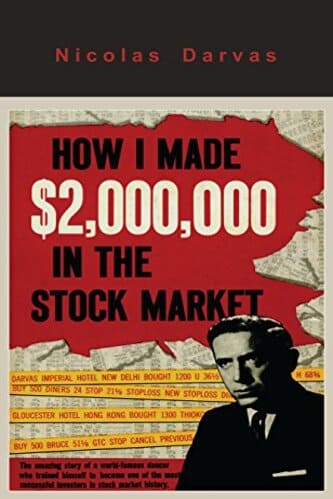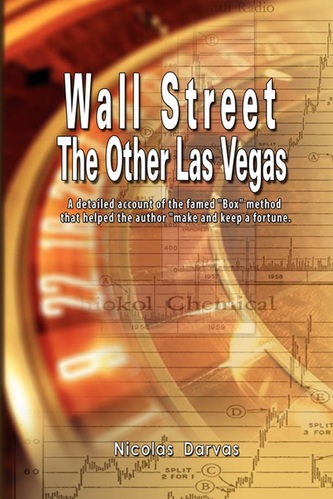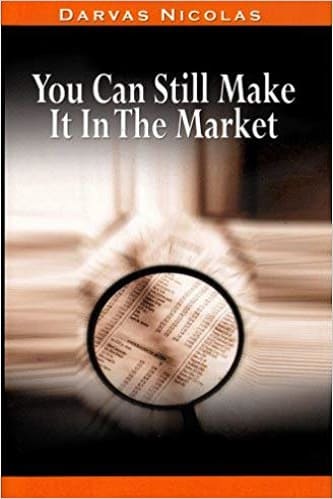Nicolas Darvas
About the Author
Nicolas Darvas (1920–1977) was a dancer, self-taught investor and author. He is best known for his book, “How I Made $2,000,000 in the Stock Market.” During his off hours as a dancer, he had read some 200 books on the market and on speculators, sometimes reading up to eight hours a day. He began his studies by reading the following:
- Profits In The Stock Market, by H. M. Gartley
- ABC of Investing, by R. C. Effinger
- The Stock Market, by Dice & Eiteman
- The Securities Market: And How It Works, by B. E. Schultz
- Your Investments, by Leo Barnes
- Consistent Profits In The Stock Market, by Curtis Dahl
- You Can Make Money on the Stock Market, by E. J. Mann
The two books which he read almost every week were The Battle for Investment Survival by Gerald M. Loeb, published in 1935, and Tape Reading and Market Tactics by Humphrey Bancroft Neill, published in 1931.
Darvas invested in a couple of stocks for which the share price had risen. The stocks continued to rise and he subsequently sold them at a profit. He subsequently came up with an approach and plan for trading stocks from which he received $2,450,000.00 in 18 months, during the 1957-58 bull market,seven years since his first trade. From the week ending 12/16/1957 through the week ending 7/27/1959, the S&P 500 rose over 53%. Market moves of that size have only happened seven times since 1950, according to Yahoo Finance weekly S&P 500 prices.
His main source of stock selection was from Barron’s. The magazine was usually a week-old edition, since he was traveling in his performing dance troupe. He would use cables and telegrams to send his buy and sell stop orders to his broker in New York City. From now on Darvas would select a stock when it made a good advance on strong volume, with favourable fundamental company research. Darvas claimed his method often revealed the signs of insider trading before a company’s release of favourable news to the public. His stock selection method was called “BOX theory”. He considered a stock price wave as a series of boxes. When the stock price was confined in a box, he waited. He bought when the price rose out of the box. He simultaneously set a stop-loss just under this trade price.
At the age of 39, after accumulating his fortune and also being exposed in Time magazine, Darvas documented his actions in the book, How I Made 2,000,000 in the Stock Market. The book describes his “Box System”, which he used to buy and sell stocks.
1960 Criminal Investigation
Time magazine subsequently reported that the New York Attorney General had “thrown the book” at Darvas, charging that his story was “unqualifiedly false” and that it could find “ascertainable” profits of only $216,000.] The action was the first to be taken under a broadened state law that banned fraud or misrepresentation in giving investment advice.
In a follow up, dated 13 January 1961, Time reported that the probe was blocked by the court, which ruled that the investigation by Attorney General Louis J. Lefkowitz was an “unwarranted invasion of the free press”. Time also reported that state investigators admitted that they had not been able to track down all of the dancer’s brokerage accounts. Darvas called the charges false, a “cynically irresponsible action, book burning by publicity”. He stated, “I keep out in a bear market and leave such exceptional stocks to those who don’t mind risking their money against the market trend”.
Darvas claimed to have never sold short. He said in 1977, “I have never done it myself because psychologically I am not cut out for short selling. But I think markets have now changed their character so much that all experienced investors should seriously consider it. It is not for the proverbial widows and orphans, though.”
The Anatomy of Success
In his third book, he wrote “Later, I went on to explore and become successful in other fields, the fashion industry, theatrical producing, real estate are just a few”. Here he claims “the formula for success remains essentially the same”. In the book he set out what he called “the rules to be followed”. “But one must know the correct route”. In his last book, You Can Still Make It In the Market,. Darvas gives the rules for a method called “Dar-Card”.



